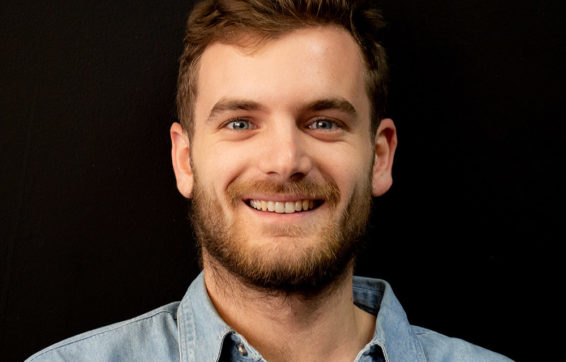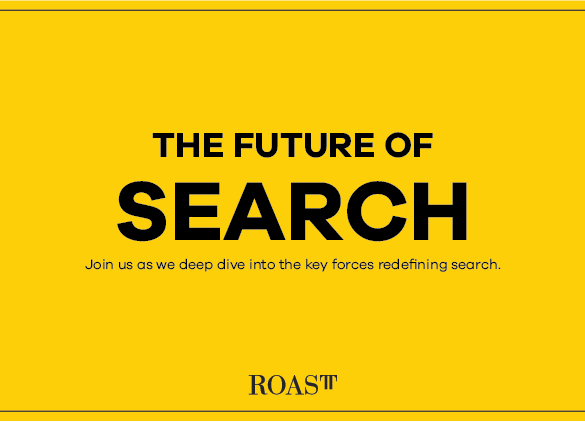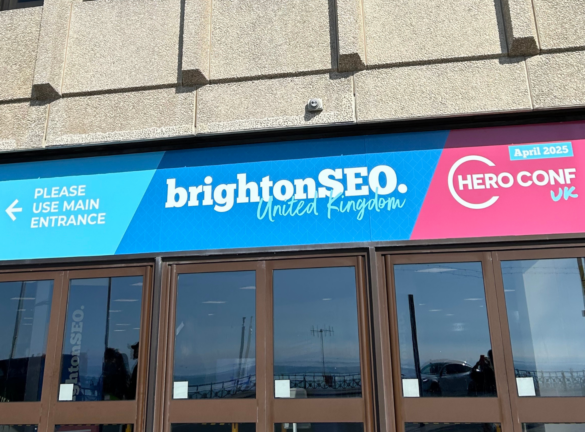
Ritson on Coronavirus – Key insights from the Marketing Week Webinar
Marketing Week’s COVID-19 webinar featured an archetypal performance by Mark Ritson, who was in equal parts pugnacious and perceptive. He took us through his predictions for the next couple of years and explained what brands can do to steal a march on their competitors during the turbulent times ahead.
Ritson’s prediction for the coming period is that we will see three distinct stages: the COVID crisis (which we’re in now), False Pneuma, and Exogenous Recession.
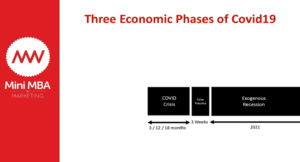
Stage 1 – COVID Crisis
The Crisis stage, however long it lasts, is a time where brands need to make quick tactical decisions to adapt to an ever-changing situation.
In this crisis stage brands find themselves in three different situations:
Flex – companies who are not badly affected, sales may even have increased
Fix – companies who need to change to survive
Freeze – companies who can’t do much than batten down the hatches and try to keep their business afloat
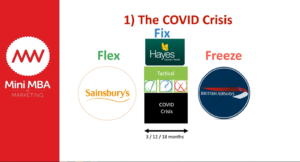
A lot of brands are getting the crisis stage wrong – no one wants to read a letter from your CEO saying “we’re here for you during this tough time”. Marketers are making the age old mistake of thinking that consumers actually care about brands.
Ritson uses the example of Corona as a brand who are handling the crisis particularly well. Sometimes the best action is no action at all:
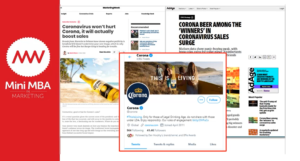
The four Ps are now a sixty year old concept so most marketers, who are constantly obsessing over the new, disregard them as irrelevant.
However, the basics of marketing have not changed, and Product, Price, Place, Promotion are still the levers you pull to attract consumers.
The problem is, many marketers now only have control over one of these levers – Promotion. They’ve been pulling on it like mad because its the only one they can reach, but sadly its the wrong lever for Crisis phase.
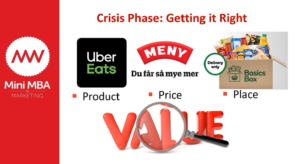
The brands using the other Ps are the ones who are getting it right:
Product: Uber Eats, who have swiftly integrated no contact food delivery into their app
Price: Meny, the Norwegian supermarket who have come up with an ingenious pricing model for hand sanitizer, where the first bottle costs the equivalent of £5 and any more bottles you which to purchase cost the equivalent of £100 each. This simultaneously stops people stockpiling and takes away awkwardness for shop keepers having to deny excess buying of products and makes the supermarket money.
Place: Woolworths in Australia who are selling deliverable $80 grocery boxes to the vulnerable. The really smart part of this tactic is that because the contents are non-perishable the boxes can be delivered by the national postal service, which takes the strain off Woolworths’ own logistics.
All of these tactics provide value for the consumer and make money for the brand. No one should feel bad about making money right now, as your brand will probably need it over the next 18 months.
The Crisis Phase offers up tactical challenges but strategic opportunities. Now is a great time to step back and think about 2021, what should your brand look like and what should it provide for consumers when life returns to normality.
Stage 2 – The False Pneuma
First, a quick etymology lesson. In ancient Greek, pneûma literally means breath or wind. In this context Ritson is using it to refer to the post-crisis ‘breath of fresh air’ which people believe will usher in a new era of humanity.
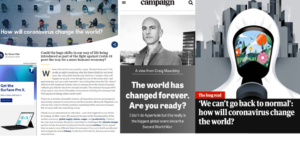
Ritson is highly critical of the hype-merchants who are arguing that nothing will ever be the same again. His opinion is that the first thing people will want to do when we get out of this mess is try as hard as possible to erase it from their memories and return to life as normal.
A study has shown that 65% of G12 consumers agree that “How well a brand responds to this crisis will have a huge impact on my likelihood to buy that brand in the future.” However, Ritson argues that it’s ridiculous to assume that consumers can accurately predict their future behaviour.
Using BSE/Mad Cow Disease as an example, a period of panic with over 160,000 cases and 55 deaths, and led to articles about ‘The End of The British Roast’ being written. During this period 60%of UK consumers said they would never eat British Beef again.
But they very quickly forgot, and the crisis ended up being nothing more than a small blip for UK beef sales.
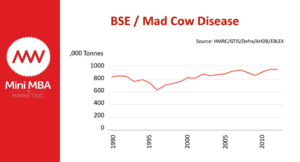
The development of human instincts and cognitive systems has taken millions of years. Marketers will have more luck looking at the essentials that are going to remain the same than the small changes that will be caused by Coronavirus.
We are likely to see a period of optimism after the Crisis stage ends, but this False Pneuma won’t last long, and soon we’re likely to find ourselves tumbling into a global recession.
Stage 3 – Exogenous Recession
So an exogenous recession (exogenous meaning caused by external factors) is probably on its way. The upside of this is that marketers know a lot about recessions; we’ve been studying them for years.
During a recession marketers have two weapons, Brand and Ads.
Let’s start with Brand.
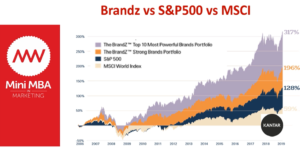
Brand equity is crucial in a recession. Admittedly, when the recession hits, strong brands will drop in value like everyone else. But it’s once the recovery starts that the strongest brands shine through. The graph above shows that after the 2008 financial crisis the Top 10 Most Powerful Brands recovered almost 3x better than the S&P 500.
If you’re a well trained marketer during a recession you will know that:
- Advertising has long term impacts
- Un-trained competitors will cut ad spend
- Your ESOV will increase relative to your competitors as a result
- If you don’t cut ad spend (or even increase ad spend) your long term growth post-recession will be strong
So what is ESOV?
ESOV stands for Excess Share Of Voice. Market Share is proportional to Share of Voice, so if you maintain your ad spend whilst competitors reduce theirs, you will get a positive ESOV, which will in turn cause your Market Share to grow. ESOV = SOV-SOM
If you increase your ad spend whilst competitors reduce theirs, your ESOV will be even higher, thus resulting in an even larger growth in Market Share.
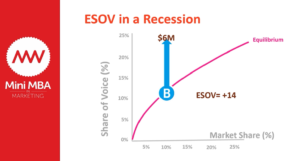
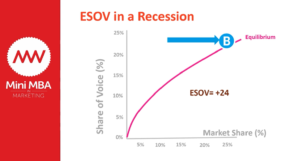
The point is that a recession is a great opportunity for brands to grow market share, if you can make the rest of the C-suite understand that marketing is an investment not a cost. There is a huge amount of data to back this up, take this study of brands during the 1920-1 recession for example:
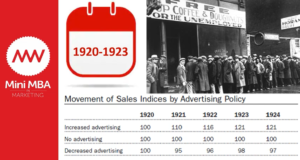
Conclusion
In conclusion, Ritson sees the coming period in three disitinct stages:
COVID Crisis – A time for tactical, multi-P responses and strategic thinking about what your brand will do when the world returns to normality.
The False Pneuma – A short period of elation when everyone talks about how much the world has changed.
Exogenous Recession – Ritson is predicting a 40% reduction in ad budgets in 2021. However, the recession will allow strong brands who invest in ads to steal market share from their competitors.
Thanks to Marketing Week, and of course Mark Ritson, for putting on this excellent session. We look forward to the next instalment.
For more content to help you navigate these uncertain times, you can download our latest Whitepaper – The Effect of COVID-19 on Search Behaviour


